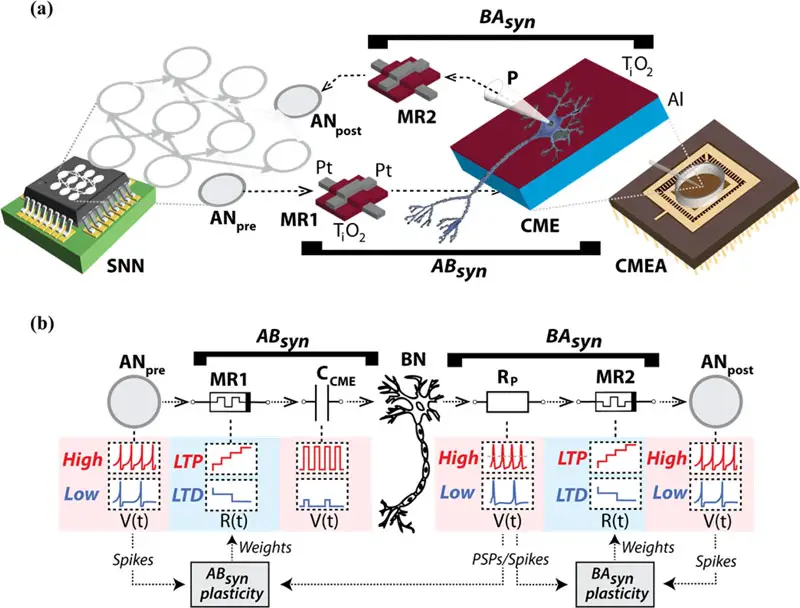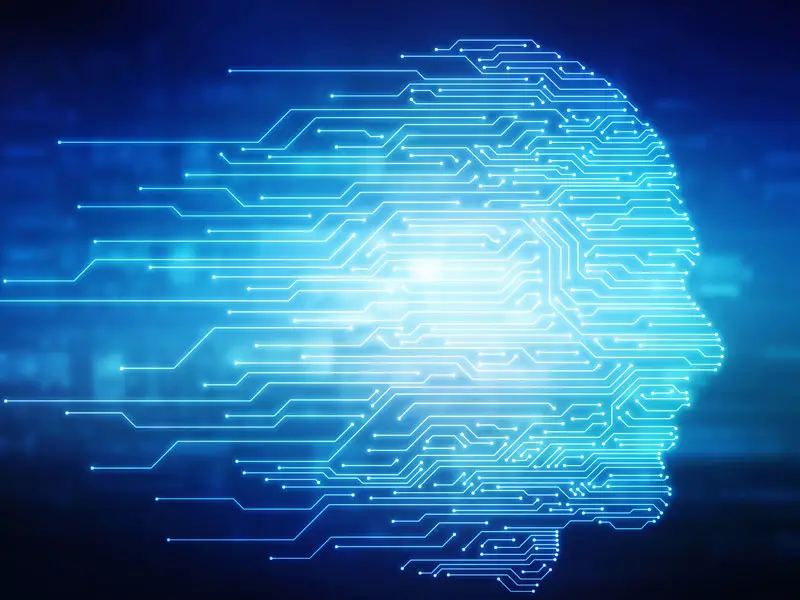
14th March 2020 Biological and artificial neurons linked up over the web A new study has demonstrated, for the first time, how three key emerging technologies can work together: brain-computer interfaces (BCIs), artificial neural networks and advanced memory technologies (also known as memristors).
New research into nanoelectronic devices led by the University of Southampton, UK, has enabled biological neurons and artificial neurons to communicate with each other over long distances. This breakthrough opens the door to further significant developments in neuroscience and artificial intelligence (AI). In the human brain, different functions are made possible by circuits of spiking neurons, connected by links called synapses. These allow a neuron (or nerve cell) to pass an electrical or chemical signal to another neuron. For this new study – published in the journal Nature Scientific Reports – the researchers created a "hybrid" neural network, where biological and artificial neurons were able to communicate with each other. Not only that, but they did so in different parts of the world, via the Internet, through a hub of artificial synapses constructed using cutting-edge nanotechnology. This is the first time the three components have come together in a unified network. During the study, researchers based at the University of Padova in Italy cultivated rat neurons in their laboratory, whilst partners from the University of Zurich and ETH Zurich created artificial neurons on silicon microchips. This "virtual laboratory" was brought together via an elaborate setup controlling nanoelectronic synapses developed at the University of Southampton. These synaptic devices are known as memristors. The Southampton-based researchers captured spiking events being sent over the Internet from the biological neurons in Italy and then distributed them to the memristive synapses. Responses were then sent onward to the artificial neurons in Zurich also in the form of spiking activity. The process simultaneously works in reverse too; from Zurich to Padova. Thus, artificial and biological neurons were able to communicate bidirectionally and in real time over long distances.
"One of the biggest challenges in conducting research of this kind and at this level has been integrating such distinct cutting edge technologies and specialist expertise that are not typically found under one roof," said Themis Prodromakis, Professor of Nanotechnology and Director of the Centre for Electronics Frontiers at the University of Southampton. "By creating a virtual lab, we have been able to achieve this." The researchers now anticipate that their approach will ignite interest from a range of scientific disciplines and accelerate the pace of innovation and scientific advancement in the field of neural interfaces. In particular, the ability to seamlessly connect disparate technologies across the globe is a step towards the democratisation of these technologies, removing a significant barrier to collaboration. "We are very excited with this new development," Professor Prodromakis added. "On one side, it sets the basis for a novel scenario that was never encountered during natural evolution – where biological and artificial neurons are linked together and communicate across global networks; laying the foundations for the Internet of Neuro-electronics. On the other hand, it brings new prospects to neuroprosthetic technologies, paving the way towards research into replacing dysfunctional parts of the brain with AI chips." For now, this study is little more than a proof of concept. But perhaps in the future, experiments like this could be exponentially scaled up. A hybrid network of sufficient size – with hundreds, thousands, and eventually millions and billions of artificial synapses – could allow the emulation of entire brain regions and the curing of various conditions. Ultimately, within the next hundred years or so, cyborg brains may become a reality, allowing the transfer of one's consciousness into a new body.
Comments »
If you enjoyed this article, please consider sharing it:
|









